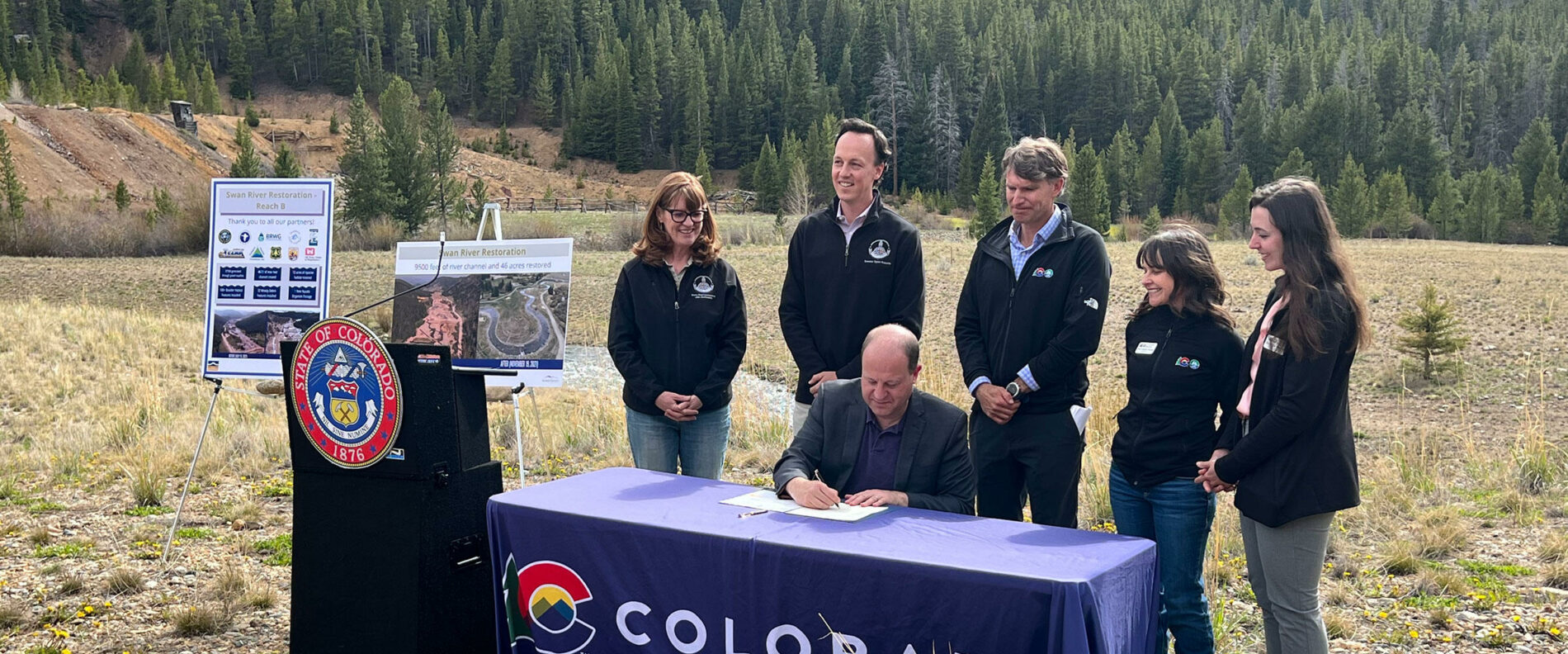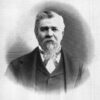Stream Restoration Legislation Will Benefit Birds and People in Colorado
Our decisions about the health and functioning of our streams and rivers reflect our priorities and values and influence all areas of life for people, birds, and nature. This legislative session, SB23-270, Projects To Restore Natural Stream Systems, was passed by the Senate, then the House, and then signed into law on June 5, 2023, by Governor Polis. SB23-270 is a solid win for Colorado’s streams and a good first-step opportunity to steward our rivers back into health. The bill was led by the Department of Natural Resources staff and sponsored by Senators Dylan Roberts and Cleave Simpson, along with Representatives Karen McCormick and Marc Catlin.
Through numerous meetings, outreach events, and late-night (or early morning?) committee hearings, SB23-270 moved through substantial changes from when it was first introduced. Audubon Rockies, Colorado Healthy Headwater Working Group, and Water for Colorado partners worked with agencies, lawmakers, water conservation districts, and other partners for the best possible outcome for healthy, functioning, and resilient river systems for people and birds—the natural water systems that we all depend upon.
Why the Need for Stream Restoration Legislation in 2023?
The need for stream restoration clarity around water rights administration is mainly three-fold.
First, existing Colorado water administration creates substantial regional variability, uncertainty, and even barriers to restoring the valuable natural processes of stream corridors. Legal clarity for stream restoration can reduce barriers for these important projects to get off the ground.
Second, the majority of our stream corridors have been degraded by more than two centuries of hydrologic modification, agricultural land use practices, roads and development, channelization, mining, and climate-driven disasters. The good news is that case studies of Colorado and other Western states’ stream restoration projects have proven successful in improving human and environmental health and reducing vulnerability to fire, flood, and drought. Thus, it was critical to provide clarity on how stream restoration could be done without needing to obtain a water right. The uncertainty around water rights was causing many projects to be put on hold.
Third, the timing of the currently available once-in-a-lifetime opportunity to receive funding from federal programs for stream and watershed restoration is critical so that we can have healthy streams and rivers for decades into the future.
The Evolution of the Bill
The bill moved through significant water community dialogue, education, and input throughout the arc of the legislative session. Significant amendments during the Senate Agriculture and Natural Resources Committee hearing resulted in unanimous support and forward movement through the General Assembly for the final version that passed.
The original bill draft was based on the science of utilizing the “historic footprint”* for where stream restoration could take place without enforcement actions. The historical footprint is how stream restoration has operated in Colorado for more than 30 years. However, that was not a concept that many legislators and water stakeholders were familiar with, so the language evolved to things they were familiar with.
The final bill defines a set of minor stream restoration activities that are not subject to water rights administration. These include stabilizing the banks or substrate of a natural stream with bioengineered or natural materials, installing porous structures in ephemeral or intermittent streams to stop degradation from erosional gullies and headcuts, and installing structures in stream systems to help recover from and mitigate the tremendous impacts that occur to water supplies from wildfires and floods. The language in SB23-270 provides clarity for project proponents and the water rights community. It also provides protections for completed stream restoration projects and those that have secured permits before August 1, 2023.
While this bill is an important step forward in facilitating stream restoration activities that improve the health and resilience of our streams and landscapes, Audubon and our partners will continue to work with stakeholders and regulators to clarify a path forward for stream restoration projects that do not fit within the minor stream activity categories.
Senator Roberts remarked at the SB23-270 bill signing on June 5th, 2023, “This bill is taking away the red tape that has gotten in the way of some of these projects and costs barriers that have gotten in the way of these projects. We can do this type of work in so many parts of our state. That’s so important right now, as we know as we try to do everything we can to conserve and protect our water. This bill started off with a very contentious idea. We made some amendments that made it a little less contentious. We know we will continue to work on this issue as it goes forward. But we are making major progress here today.”
What’s Next?
In the coming months, the Colorado Department of Natural Resources will work closely with the Division of Water Resources to interpret the language signed into law. Following this, Audubon and the Healthy Headwaters Working group will facilitate outreach and training events on SB23-270 for stream restoration practitioners and interested organizations. And most importantly, we will continue to educate decision-makers on the evolving state of river restoration science and the benefits of healthy functioning floodplains and river corridors for birds and people.
Thank You!
Thank you for your interest and engagement during the 2023 Colorado legislative session on stream restoration! More than 300 people attended the live Audubon-Colorado Department of Natural Resources stream restoration webinars, part 1 and part 2. And 1,266 Audubon members sent supportive comments to legislators. Canyon Wrens, Yellow Warblers, and Belted Kingfishers depend on you to support our healthy rivers, wetlands, and watersheds for all of us. Audubon will continue working with agencies, lawmakers, and partners to prioritize water security for people, birds, and the healthy freshwater ecosystems we all depend upon.
*Historic footprint references the historic riverine footprint encompassing the stream channel, associated riparian zones, and floodplain.
Link to the original article: Stream Restoration Legislation Will Benefit Birds and People in Colorado | Audubon Rockies








